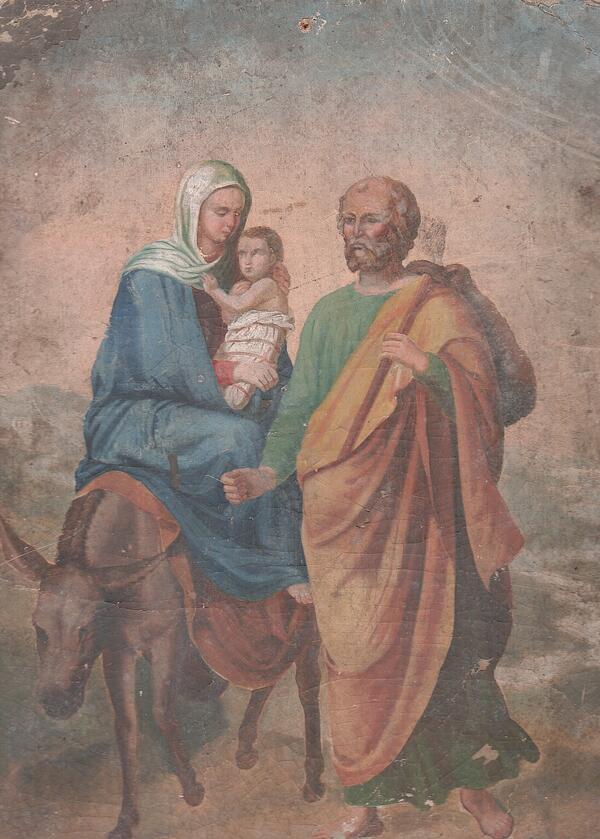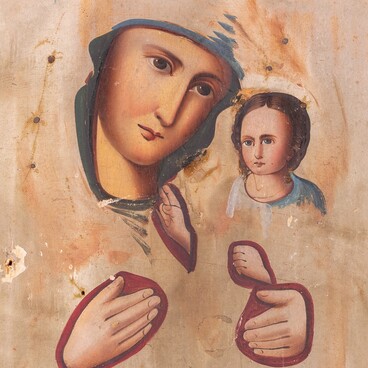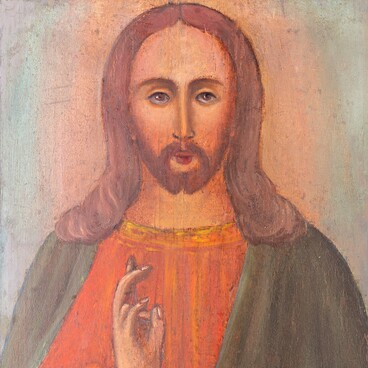The development of icon painting in the Belgorod area is associated with the name of the diplomat and commander, Count Boris Petrovich Sheremetev. In the early 18th century, he acquired, among other possessions in the region, the Borisovskaya Sloboda with serfs.
In those years, a convent was founded in Borisovka in honor of the Tikhvin Icon of the Mother of God. Count Sheremetev decided to have local icon painters create monastery’s murals. To this end, he sent experienced artists from St. Petersburg to teach the peasants. Soon Borisovka icon painters became known outside the settlement.
In 1902, an icon painting school was established in Borisovka, where iconography, painting, as well as Sacred History, church service, and Church history were taught. It was designed to be completed in four years. By 1911, there was a number of high-class masters among several hundred Borisovka icon painters.
In parallel with icon painting, related crafts flourished: icon embellishing, gilding and kiot-making. The nuns of the Tikhvin Convent were engaged in decorating images using colored paper, gilded silver foil, beads and other things.
After the Russian Revolution, icon-painting traditions were lost, the quality of products noticeably decreased.
In the painting presented at the exhibition, the artist depicted the plot of the Flight into Egypt of the Mother of God, the Christ Child and the righteous Joseph. The tale compiled by Dimitry of Rostov tells that when the magi left Bethlehem, “The Angel of the Lord appeared to Joseph in a dream, commanding him that he, along with the newborn Jesus Christ and His Mother… fled to Egypt and stayed there… as long as he was told to…” Thus, the Holy Family was saved from King Herod’s persecution.
This presented artifact does not belong to the canonical iconographic images, but generally meets their requirements. The red-and-blue robes of the Virgin symbolize her eternal chosenness, Perpetual Virginity and innermost mystery, the white shrouds of the Christ Child — purity, innocence and radiance of Divine glory. The righteous Joseph, walking next to him, appears as a protector and support. His face is focused and anxious. The donkey represents diligence and dedication. Meticulously worked out details and color shades demonstrate the high level of skill of an unknown artist.
In those years, a convent was founded in Borisovka in honor of the Tikhvin Icon of the Mother of God. Count Sheremetev decided to have local icon painters create monastery’s murals. To this end, he sent experienced artists from St. Petersburg to teach the peasants. Soon Borisovka icon painters became known outside the settlement.
In 1902, an icon painting school was established in Borisovka, where iconography, painting, as well as Sacred History, church service, and Church history were taught. It was designed to be completed in four years. By 1911, there was a number of high-class masters among several hundred Borisovka icon painters.
In parallel with icon painting, related crafts flourished: icon embellishing, gilding and kiot-making. The nuns of the Tikhvin Convent were engaged in decorating images using colored paper, gilded silver foil, beads and other things.
After the Russian Revolution, icon-painting traditions were lost, the quality of products noticeably decreased.
In the painting presented at the exhibition, the artist depicted the plot of the Flight into Egypt of the Mother of God, the Christ Child and the righteous Joseph. The tale compiled by Dimitry of Rostov tells that when the magi left Bethlehem, “The Angel of the Lord appeared to Joseph in a dream, commanding him that he, along with the newborn Jesus Christ and His Mother… fled to Egypt and stayed there… as long as he was told to…” Thus, the Holy Family was saved from King Herod’s persecution.
This presented artifact does not belong to the canonical iconographic images, but generally meets their requirements. The red-and-blue robes of the Virgin symbolize her eternal chosenness, Perpetual Virginity and innermost mystery, the white shrouds of the Christ Child — purity, innocence and radiance of Divine glory. The righteous Joseph, walking next to him, appears as a protector and support. His face is focused and anxious. The donkey represents diligence and dedication. Meticulously worked out details and color shades demonstrate the high level of skill of an unknown artist.



